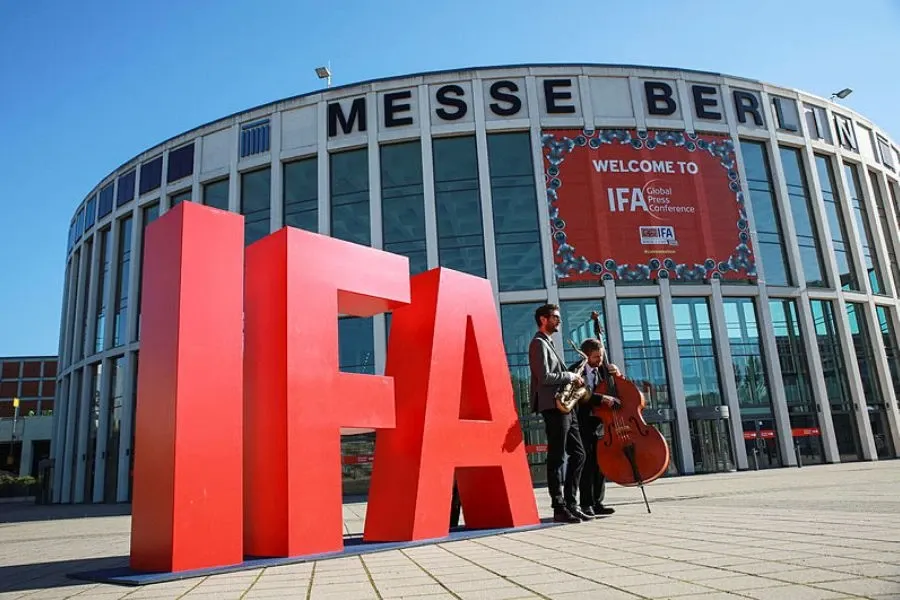Server Market Revenue Grew 61 Percent in 3Q25
The worldwide server market reached a record $112.4 billion in revenue during the third quarter of the year, according to IDC.

The value of the global Technical Consumer Goods (TCG) market, excluding North America and South Africa, fell to €306 billion during the COVID-19 retail shutdowns, according to Gfk. The company recorded a decline of -5.8 percent for TCG global sales for the first half year of 2020. Compared to other industries, this is a relatively small decline as this market benefitted from “at-home“ needs and digitization during lockdown.
“Globally, the home electronics industry has proven to be very resilient globally during the COVID 19 pandemic. At around six percent, the global decline in sales in the first half of the year was very moderate compared with other sectors. This development can be explained by the industry's innovative strength and the fact that the home electronics segment is able to offer a large number of technical products for stay@home that are in high demand during the crisis: From devices for home based work and home schooling (work@home) to products for all areas of the home, as well as health care and well-being,“ said Kai Hillebrandt, chairman of the supervisory board of gfu Consumer & Home Electronics.
According to GfK’s Consumer Pulse study, 83 percent of survey respondents changed their shopping behavior during the pandemic. The study also reveals that during the core impact months of March to June eight in ten (78 percent) of consumers were concerned about the pandemic. However, today 85 percent are concerned about the ripple effects of the pandemic on the economy. Despite the inevitable challenges to all markets in H1 2020, the TCG market proved to be resilient, declining by only -5.8 percent as consumers turned to technology to help them cope with the crisis.
Over the last few months during what we are calling the ‘Panic’ and ‘Adapt’ phases of the pandemic, we saw a significant negative impact on sales due to retail shutdowns. There was a clear demand shift from “want“ to “need“ at the onset of the pandemic. The ‘at home’ experiences namely ‘office at home’, ‘eat at home’, ‘entertain at home’ and ‘clean at home’ kept the market going. The underlying trends that remained crucial even for these “at-home“ experiences were performance, simplification, borderless shopping and health & hygiene. These trends will continue to be important even in the ‘New Normal’ phase.
At the onset of the Panic phase, the most basic need was for continuity of work and education. The IT & Office sector grew by a steady +15 percent in value in March and +15 percent in April 2020. In comparison, the TCG sector excluding IT and Office declined by -18 percent in March and -24 percent in April 2020 in value. The weeks between March 9 and April 5 when lockdown was initiated were characterized by panic buying.
Volume sales of Webcams surged by 297 percent, Monitors by 120 percent and Notebooks and computing tablets by 62 percent across France, Germany, Italy, Spain and Great Britain. This trend continued even post-lockdown. When combined with the demand for TCG products from other ‘at home’ trends, the result was quick recovery. The post-lockdown surge in sales during what GfK terms as “Revenge Shopping“ resulted in consumers flocking to equip themselves for a second wave of Coronavirus. This resulted in the IT sector growing by +17.2 percent and Office by +12.1 percent in value terms globally in the first six months of 2020.
More than half (53 percent) of consumers globally agree with the statement, “I am always looking for ways to simplify my life“. When the entire world has moved in home, any appliance which simplified life and saved consumers time spent on chores was much appreciated. In the Panic phase when lockdowns were being initiated, consumers stockpiled frozen food, driving the immediate need for freezers and this is clearly reflected in the sales figures. For instance, in the weeks between March 2 and March 22 volume sales grew by 317 percent in Great Britain and by 185 percent in Germany.
Once the stockpiling moderated, next came a steady demand for food preparation appliances. This characterizes the Adapt phase, with volume sales in the weeks between March 23 and April 26 growing by +28 percent in Germany. The trend for ‘eat at home’ continued steadily post-lockdown and during the Revenge Shopping phase the food preparation category grew by +24.8 percent in value terms, driving value growth in the small domestic appliance sector by +8.6 percent. While some major domestic appliance (MDA) categories also experienced sizable growth, e.g. microwave ovens (+36.8 percent), the MDA market overall experienced a value decline of -8.6 percent decline.
As consumers adjusted to life in lockdown, the need for ‘entertain at home’ kicked in. Categories such as streaming sticks grew significantly in some countries e.g. +54 percent in the Netherlands during the initial lockdown in the weeks between March 9 and April 5. Gaming notebooks witnessed strong volume sales of +55 percent and gaming monitors were up +62 percent in the first half of 2020.
However, TV sales slumped during the weeks of lockdown but returned to a strong positive growth during the Revenge Shopping phase. Overall, the TV market declined by -7 percent in value - one of the reasons being that TV is considered a big-ticket purchase. However, there was stark divide between regions, Western Europe and Developed Asia grew by 4 percent and 13 percent respectively in volume, while Emerging Asia declined by -28 percent in value terms. Strong shifts in market shares were visible on regional and local levels while elevated volatility remains after lockdowns. Overall, the consumer electronics sector including photo declined by -8.7 percent.